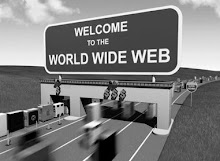Over this semester I have really enjoyed learning about the 'New Technologies' and how as starting teacher we can embed and integrate them into our teaching.
There are so many things that I have learnt and to name a few, who knew that a social networking site such as Twitter could be used as an educational tool? Or that blogs and discussions boards can have such a positive effect on learning and feedback.
This unit has opened up a whole new avenue to teaching for me and I have been show some great resources that I can use in my own classroom when I start teaching, or even on prac.
An important issue that I will take away from this unit is that technology in the classroom should not just be used as a tool. Instead it should be embedded and integrated into the curriculum so that using these kinds of technological resources becomes a normal part of a student’s everyday life. The technological world is constantly growing with better and more advanced things being produced. So shouldn’t students have the opportunity to learn about and use them in their classroom?
Working with technology in at school also allows students to connect with each other not just at school but also outside of school to. It follows the social constructivist theory that learning should be collaborative, scaffolded by the teacher and building ones own knowledge. This learning environment is engaging, student-centered and students are actively leaning.
I also really enjoyed making my own wiki for assignment two. Until this unit I had only ever had a quick look at Wikipedia, and never thought i would be able to create my own educational wiki!
To conclude, this unit has been eye-opening and I feel I have learnt many new ways to improve my teaching by bringing it in to the 21st century and creating a safe, active and engaging learning environment through the use of Information and Communication Technologies.
